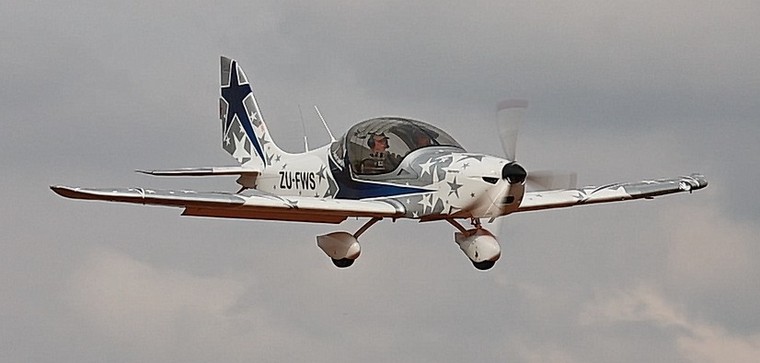
















Flying the PTAR for the first time
By Rob Jonkers
Google Banner Ad
Having been involved in the PTAR since 2016 in some official capacity and Race Director since 2019, and not having flown a PTAR as yet, it was probably a good time and opportunity to take part, having handed over the Race Directorship to Iaan Myburgh, and experience first-hand the race. As such when Leon Bouttell the Chairman of SAPFA offered such an opportunity to fly with him, I accepted the challenge to at least be able to fly the handiwork of the changed format from the 2019 season.
The race has always been mired in controversy over its long history, given that it is a handicapped event with a wide field of competing aircraft types, course design influences, weather conditions that affect the outcome with handicapped speeds having the biggest impact. As such handicap speeds engenders the most “negotiated” factor in the run up to the race. Much of the science of the 3D speed and the course handicap speed has at least been refined with the advent of the Speed Rallies where with 4 events per year much experience has been gained with the SAPFA team and with more speed data being available. Of course, the speed rallies have also had the benefit of racers to gain more flying time racing than the limit of only having one big event in a year prior 2018. As such the PTAR has become an extremely close race with the top 10 within 5 minutes of each other - and that over the two day 600 nm event, that is almost 1200 km.
Leon & I thus entered to take part in his Evektor Harmony, as a previous Speed Rally & PTAR winner who normally flies with Cousin Martin Meyer, we decided that we would swop roles for me to fly and he would navigate, given that he had racing navigating experience. For this PTAR some adjustments to the rules were made, taking out the Accuracy element in the scoring and with more focus on the handicap speed, but with percentage exceedance penalties brought in. For day one the pre-plotted map is still provided 30 minutes prior take-off, but for day two a blank map is provided for racers to prepare their map a day before - as this was one of the wishes of competitors to bring back into the race format.
Friday as day one briefing was at 08h30, and thereafter we prepared the aircraft and waited for papers time, and as one of the slower aircraft had some additional time to get ready, as it was a fastest to slowest take-off sequence at 30 second intervals. Leon highlighted the course line and marked up the minute markers fairly quickly, these minute markers are useful to check on the wind influence and whether we would be on track.
The Day One course was anti-clockwise first up north to Marble Hall, then west to the Renosterkop dam, south to Power Station country, then east up to Carolina, returning to Middelburg. Wind conditions was steady from the north east with the strategy to fly at the low end of the altitude limit going north and at the high end going south, also being mindful that there was already a 2000 ft course altitude variation and the cost of climbs being expensive in loss of speed. The first leg went well, track was spot on, but somehow the 2nd leg a drift left of track occurred until I saw Grobersdal airfield up ahead which was not where the track should have gone…., that was a wake-up call that we had lost focus somehow, but soon recovered to get past turn point two ok. That cost us at least 0.4% on course accuracy.

The remainder of the course navigation was super accurate, Leon calling for course corrections as we flew each leg, where I concentrated on anticipating altitude changes, reading thermals in the turbulence. After returning, we waited for our results, and at least achieved 7th place with almost a minute of time gain on handicap and 0.94% on distance overflown. The remainder of the afternoon we prepared the map for Day 2.
Saturday as day two, the weather conditions seemed at first going to be fine with wind similar to day one, but with some cloud cover, but would prove to be quite challenging at the end of the day as the wind speed increased as well as turbulence. The take-off sequence was slowest to fastest with the gain/loss of day one added into the start time. After take-off the strategy was the same, lower going north, higher going south, with the course coming back over the airfield as a cross-over.
Our course this time was very accurate, but we were thrown around in the turbulence, and with wind changes, we saw a north easterly wind in the Marble Hall area and north westerly in the Bethal area, which gave us an overall three-minute gain, but affected the whole field arriving slightly earlier than the expected finish time. As we flew the course we had caught up and past all the slower aircraft except for the Bosbok who having started just behind us past us early on. After going past the last turn point for home, we saw the faster aircraft starting to zoom past us with some within seconds of the line - with a resulting 9th place. After tallying up both days results, we achieved an overall 10th place.
Reflecting on the race as a competitor this time round, it is for sure intense, having seen a small lapse of concentration could quickly go pear shaped, there is for sure strategy to be followed, which can have a significant outcome to the results, reading conditions along each leg, adjusting and anticipating, and getting round each turn point in the most efficient manner. It is almost like being in a bubble in space time, the only constant being the aircraft you are flying in producing its continuous power wherever you are in the course, the rest up to us to maximise the accuracy of navigation and gaining the benefit (or not) of the conditions in each point around the course. What would I do differently next time - probably not attempt to play too much with altitude, it seems to have overall a negative effect with too much loss in efficiency with an unknown benefit. Will I do it again? Yes for sure, what a question. Many thanks to Leon for this awesome experience.

Petit to Blue Mountain Valley Private Strip
Google Banner Ad

 |
 |
 Copyright © 2024 Pilot's Post PTY Ltd
The information, views and opinions by the authors contributing to Pilot’s Post are not necessarily those of the editor or other writers at Pilot’s Post.
Copyright © 2024 Pilot's Post PTY Ltd
The information, views and opinions by the authors contributing to Pilot’s Post are not necessarily those of the editor or other writers at Pilot’s Post.